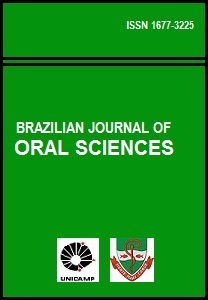Abstract
Aim: To determine indicators of prognosis for mechanical risks of amalgam and composite resin restorations in permanent teeth. Methods: Thirty-nine adult patients with direct clinical, photographic, radiographic and model examinations. A total of 256 restorations were classified as “not satisfactory,” with Bravo or Charlie values according to the modified Ryge /USPHS criteria. The total “n” was divided into Bravo and Charlie groups according to the value obtained in the “marginal adaptation” parameter. Each of the groups was sub-divided by the type of material (amalgam and composite resins) and the class: occlusal (O) and proximal (MOD). Results: Comparing the Bravo and Charlie groups, the statistically significant indicators were: the mesiodistal dimension (p=0.037), the distal isthmus (p<0.05), the average of the isthmuses (p<0.05), the distal (p<0.05) cavity depth, and the average depth of the MOD (p<0.05) cavities. It was concluded that the type and the class of the restoration are not indicators for sampling. Conclusions: With regard to the design of the cavity preparation, the valid mechanical risk indicators include the mesiodistal dimension, the distal isthmus, the average of the isthmuses, the depth of the distal cavity and the average depth of the MOD cavities. A simple clinical assessment does not provide sufficient information to establish the indicators for mechanical failure risk of restorations.The Brazilian Journal of Oral Sciences uses the Creative Commons license (CC), thus preserving the integrity of the articles in an open access environment.
Downloads
Download data is not yet available.

